The Bureau of Labor Statistics (BLS) released its monthly Current Employment Statistics (CES) report and Current Population Survey (CPS) for February 2023 on Friday, March 10th. The monthly change in employment given by the CES and the unemployment rate from the CPS are seen as the standard gauges for assessing the health of the U.S. labor market.
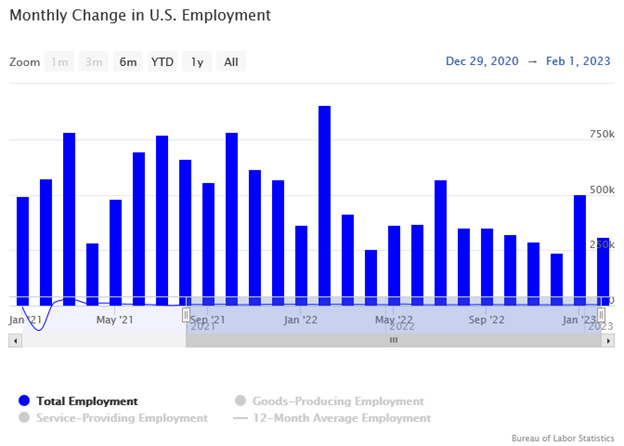
Employment in the U.S. rose by 311,000 jobs. The jobs results were above the Geographic Solutions, Inc. forecast of 264,000 but closer than the WSJ forecast of 225,000. Although the gains were smaller than the surprising 504,000 new jobs in January, the performance in February was still strong. It is still a bit early to conclude that employment has reestablished its softening pattern after the growth outburst in January. Geographic Solutions, Inc. derives its employment forecast from internal data on the number of job searchers, job severances, and applications for unemployment benefits filed on Geographic Solutions state client sites. The forecast uses unemployment claims data from the U.S. Department of Labor (USDOL).
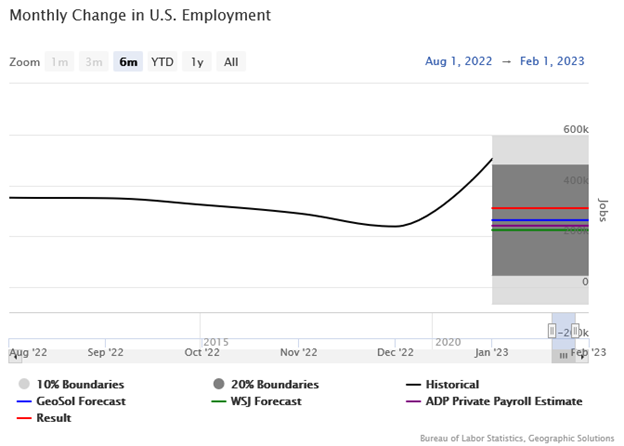
The unemployment rate increased to 3.6%, right in line with the Geographic Solutions forecast. The WSJ estimated that the unemployment rate would remain unchanged at 3.4%. The unemployment rate forecast uses internal data on the number of job openings, unemployment applications, and job severances on Geographic Solutions state client sites. The forecast uses unemployment claims data from the USDOL.
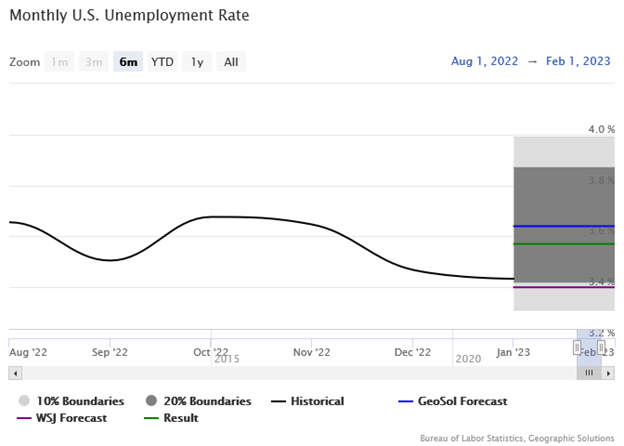
Job creation was strongest in Leisure & Hospitality (105,000) and Education & Health Services (74,000). Job growth was mixed in other industries but positive on net.
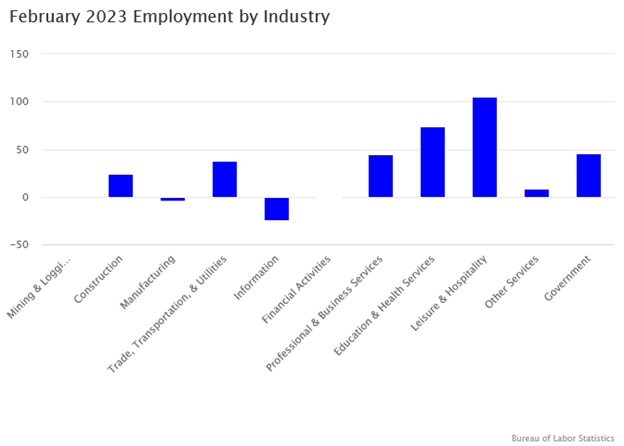
Leisure & Hospitality and Government are the only major sectors to remain below their pre-pandemic employment level.
The labor force participation rate increased to 62.5% from the previous month. The more expansive U-6 unemployment rate counts discouraged workers who are no longer actively seeking work (and therefore no longer in the labor force) and those that have settled for part-time employment but desire a full-time job. This measure of unemployment rose to 6.8%.
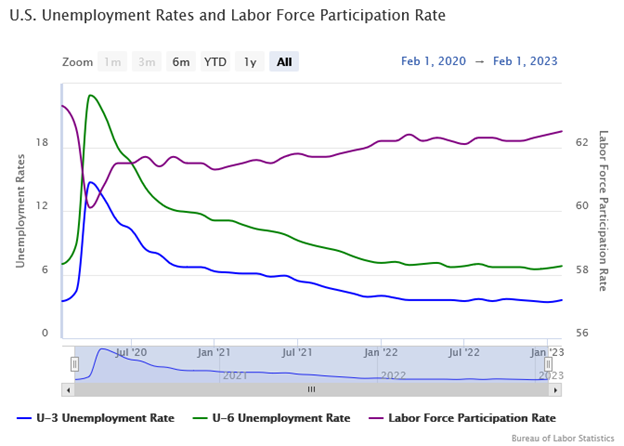
The jobs market is in an interesting spot as it relates to inflation. Typically, large job gains are seen as putting upward pressure on inflation. However, more jobs can also increase production and having more goods and services in the market can alleviate inflation from the supply side. Wage data from the report is signaling that inflation caused by increased salary demands by employees is on the wane. Wage increases have slowed for three consecutive months and are at the lowest growth rate in a year. At this point it is still too early to conclude that inflation rates are definitively heading downward, but this report is giving us reasons for optimism.